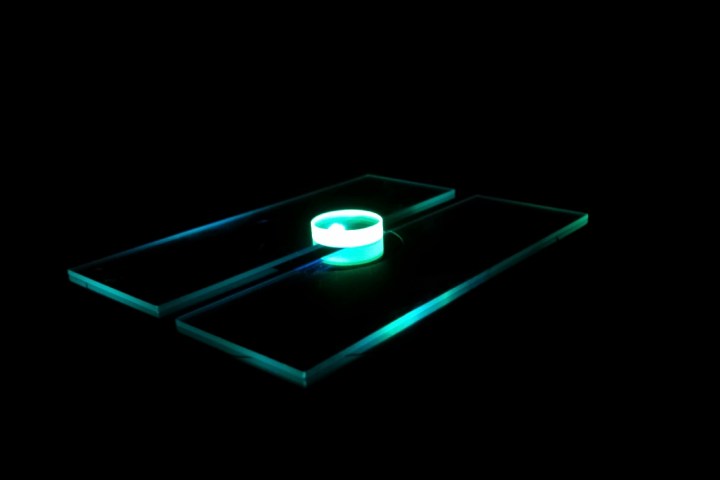
“I’ve always been fascinated by the material properties of fluorescent proteins,” said Malte Gather, a professor at the University of St. Andrews, who helped invent the laser. “They have a very special molecular structure that is unlike the structure of any of the synthetic materials that we use.”
Polariton lasers are different in their physics from conventional lasers, and potentially more efficient at generating light at low energy levels. However, they have previously proven unsuitable for real-world applications. One reason for this is the cryogenic temperature they require to work effectively.
“Polariton lasers have had to be operated at very, very low temperatures — below the temperature at which nitrogen gas becomes a liquid — which is not very convenient,” Gather explained.
These constraints are one of the areas the new jellyfish protein-based improves on previous polariton lasers, since it can be operated at room temperature.
In doing so, it could have a profound impact on optical computing as we know it. “In optical computing it’s important to reduce the amount of energy that is required to encode a single bit using a laser,” said Gather. “In this context, having a laser that requires significantly lower energy would be very important. That’s something which is driving the polariton laser field.”
Another application for the laser, he suggested, would be to create a “bio-compatible, bio-implantable light source.” This tiny laser could even be embedded in individual cells, and due to its protein-based nature would not be rejected by them. At the same time, its low energy operation would not risk damaging surrounding tissues.
“Having very small lasers that one can fit into living things allows us to use them as a bar code of sorts,” Gather noted. “It’s well known that a laser emits a very narrow emission spectrum, but it’s also possible to have lasers emit different emission spectrums. This means that having lasers all emitting a slightly different wavelength into cells or tissue, it should be possible to use them as an identifier by measuring the spectrum.”
As to a rollout of this new technology, Gather suggested that we’re looking at a five- to 10-year time frame.
“This is beyond the point of just being hypothesized,” he said. “We have demonstrated that one can make a polariton laser based on fluorescent proteins. What we haven’t done yet is to use the laser to do anything. For the optical computing applications, I expect that we’ll be able to see proof-of-principle demonstrations within the next four to five years. The same timescale is probably true for the bio-applications, while it could be another half-decade after that until people start to use this as a tool.”


